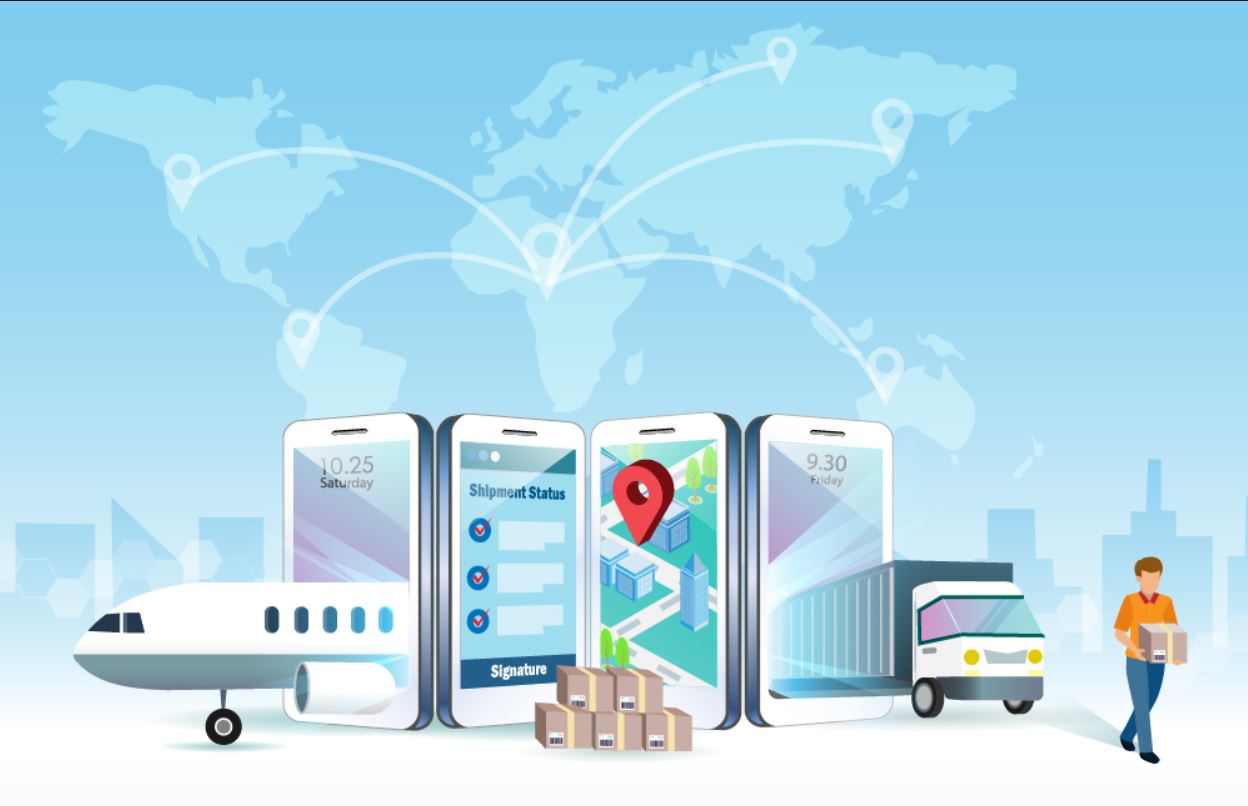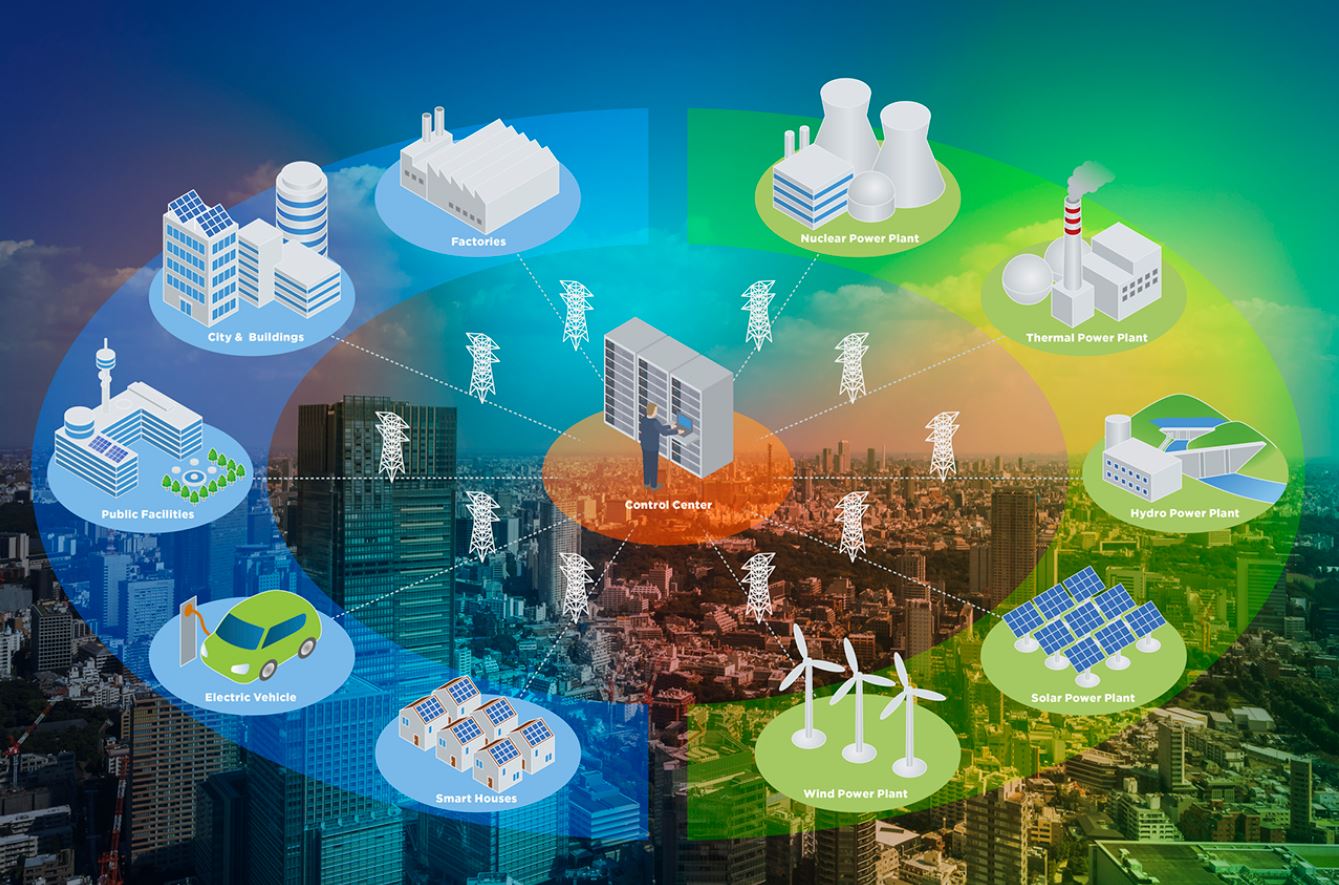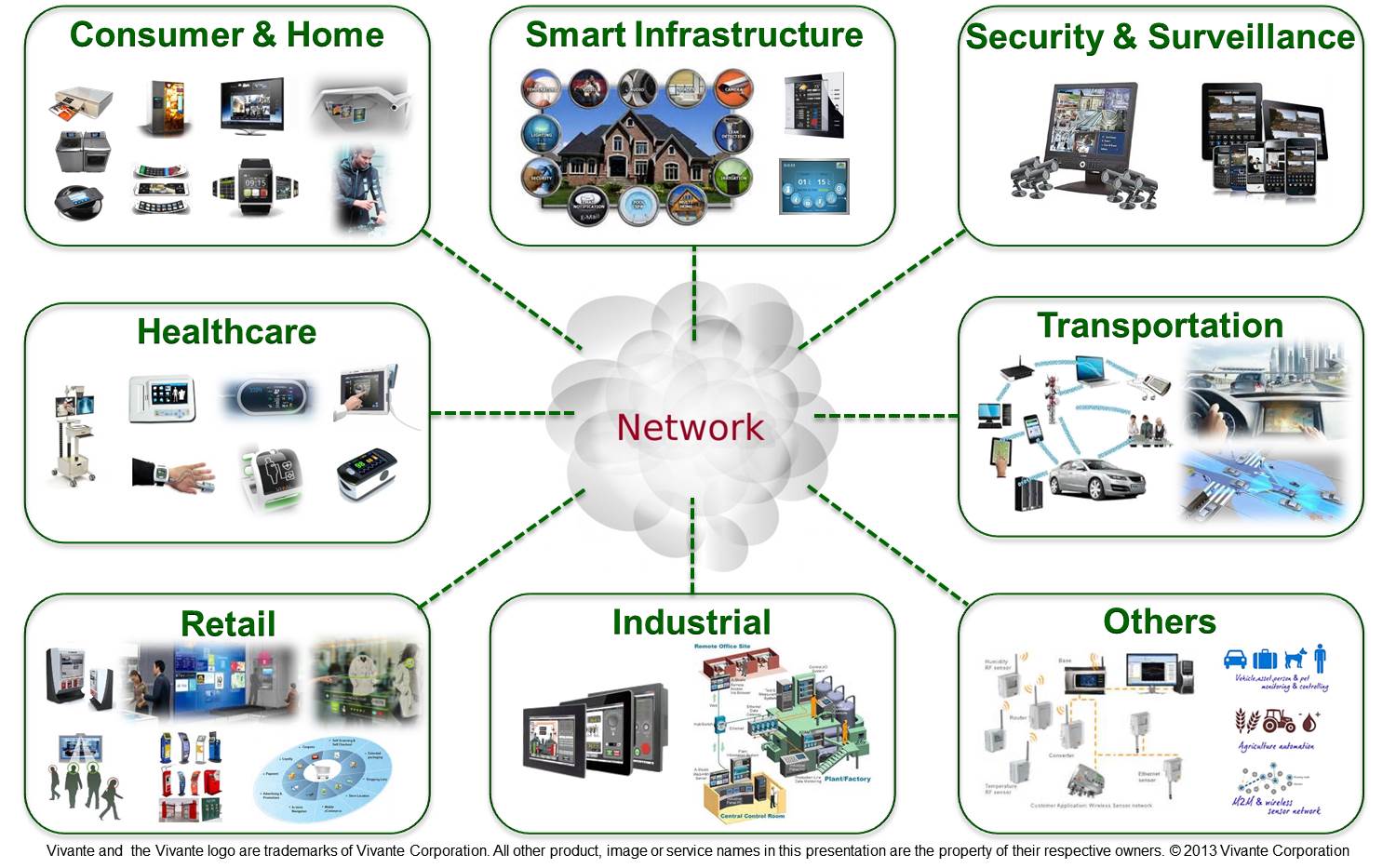Introduction
Welcome to the world of IoT fleet management, where cutting-edge technology and efficient logistics intersect to transform the way businesses operate their vehicle fleets. In today’s fast-paced world, managing and optimizing fleet operations has become crucial for companies across various industries. With the advancements in Internet of Things (IoT) technology, fleet management has been revolutionized, enabling businesses to monitor, track, analyze, and optimize their fleets in real-time.
IoT fleet management leverages the power of connected devices, sensors, and cloud computing to gather and transmit valuable data about vehicles, drivers, and overall fleet operations. This data provides valuable insights to fleet managers, empowering them to make informed decisions, streamline operations, improve safety, and enhance efficiency.
Traditional fleet management systems often relied on manual processes and limited visibility, leading to inefficiencies, higher costs, and increased risks. IoT fleet management, on the other hand, offers a comprehensive and automated solution that not only tracks vehicles’ location but also monitors critical parameters like fuel consumption, maintenance schedules, driver behavior, and cargo conditions.
The benefits of IoT fleet management are immense. It enables businesses to optimize routes, reduce fuel consumption, improve driver performance, enhance customer service, and ensure compliance with regulations. With real-time insights and predictive analytics, fleet managers can proactively address issues, minimize downtime, and make data-driven decisions to achieve significant cost savings.
While the adoption of IoT fleet management has gained momentum in recent years, there are still some challenges and considerations to navigate. Implementation costs, data security, integration with existing systems, and driver acceptance are a few factors that need careful evaluation. However, with the right strategy and solution in place, businesses can unlock the full potential of IoT fleet management and gain a competitive edge in today’s dynamic market.
In this article, we will delve deeper into the world of IoT fleet management, exploring its functionalities, benefits, features, challenges, considerations, and real-world use cases. By the end, you will have a comprehensive understanding of how IoT fleet management is revolutionizing the way businesses operate and manage their vehicle fleets. So, fasten your seatbelt, and let’s embark on this exciting journey!
What is IoT Fleet Management?
IoT fleet management refers to the integration of Internet of Things (IoT) technology into the management and operation of vehicle fleets. It involves the use of connected devices, sensors, and cloud computing to collect and transmit data about vehicles, drivers, and various aspects of fleet operations. This data is then analyzed and utilized to optimize fleet performance, improve efficiency, enhance safety, and reduce costs.
IoT fleet management goes beyond basic tracking and monitoring of vehicles’ locations. It provides fleet managers with real-time insights into important metrics such as fuel consumption, vehicle utilization, driver behavior, engine diagnostics, and maintenance schedules. This enables proactive decision-making and allows for timely interventions to address issues, which ultimately leads to improved fleet productivity and effectiveness.
The core components of IoT fleet management include hardware devices installed in vehicles, such as GPS trackers, sensors, and telematics devices, which facilitate the continuous collection and transmission of data. The data is then stored and processed in the cloud, where powerful analytics tools extract valuable insights. These insights are presented to fleet managers through user-friendly dashboards and reports, enabling them to make data-driven decisions.
One of the key advantages of IoT fleet management is its ability to provide real-time visibility and control over fleet operations. Fleet managers can monitor the location and status of vehicles, track driver performance, and receive alerts for any anomalies or incidents. This level of visibility enables them to optimize routes, coordinate pickups and deliveries, and respond quickly to emergencies or delays.
Furthermore, IoT fleet management contributes to improving driver safety and compliance with regulations. It can monitor driver behavior, such as harsh braking, speeding, and seatbelt usage, and provide feedback and coaching to promote safer driving practices. This not only reduces the risk of accidents but also helps in maintaining a positive reputation for the company.
In summary, IoT fleet management is a comprehensive solution that leverages IoT technology to optimize the management and operation of vehicle fleets. It offers real-time visibility, actionable insights, and enhanced control over fleet operations, leading to improved efficiency, reduced costs, and increased safety. In the next section, we will explore how IoT fleet management works and the technologies involved.
How Does IoT Fleet Management Work?
IoT fleet management involves the integration of various technologies and processes to enable efficient monitoring and optimization of vehicle fleets. Let’s explore how this innovative system works:
1. Vehicle Tracking: IoT fleet management starts with the installation of GPS tracking devices in vehicles. These devices collect real-time data on the vehicles’ location, speed, and direction, which is transmitted to a central server or cloud platform. This tracking data forms the foundation of fleet management, providing accurate and up-to-date information about the fleet’s movements.
2. Telematics: In addition to GPS tracking, IoT fleet management utilizes telematics devices to collect detailed information about vehicle performance and driver behavior. Telematics devices measure parameters such as engine diagnostics, fuel consumption, acceleration, braking, and idle time. This data provides fleet managers with insights into the health of the vehicles and allows them to optimize fuel usage, identify maintenance needs, and monitor driver efficiency.
3. Data Transmission: The data collected by GPS trackers and telematics devices is transmitted wirelessly to the cloud platform through cellular networks or satellite communication. This allows for real-time monitoring and analysis of fleet operations, regardless of the geographical location of the vehicles.
4. Cloud Computing: The collected data is stored and processed in the cloud, where sophisticated analytics algorithms and machine learning models analyze the information. Fleet managers can access this data from any device with an internet connection, such as computers, smartphones, or tablets, using specialized fleet management software.
5. Real-time Insights and Visualization: The processed data is presented to fleet managers through intuitive dashboards and reports. These visualizations provide real-time insights into key metrics like vehicle utilization, driver performance, fuel efficiency, and maintenance needs. Fleet managers can track the fleet’s performance, identify areas for improvement, and make data-driven decisions to enhance efficiency and reduce costs.
6. Automated Alerts and Notifications: IoT fleet management systems can be configured to generate automated alerts and notifications for various events or anomalies. For example, if a vehicle deviates from its assigned route, exceeds speed limits, or experiences a mechanical issue, the system can send immediate alerts to the appropriate stakeholders. This enables swift action and helps prevent potential issues from escalating.
7. Integration and Collaboration: IoT fleet management can be integrated with other existing systems, such as customer relationship management (CRM), enterprise resource planning (ERP), and dispatch management software. This allows for seamless collaboration and data sharing across different departments and functions, facilitating better coordination and streamlined operations.
In summary, IoT fleet management works by leveraging GPS tracking, telematics, cloud computing, and real-time analytics to collect, analyze, and visualize data about fleet operations. This enables fleet managers to monitor vehicles, optimize routes, improve driver behavior, and make informed decisions to enhance efficiency and productivity.
Benefits of IoT Fleet Management
IoT fleet management offers a wide range of benefits for businesses that rely on vehicle fleets to conduct their operations. Let’s explore some of the key advantages:
1. Enhanced Efficiency: By leveraging real-time data and analytics, IoT fleet management enables businesses to optimize routes, monitor fuel consumption, and track vehicle utilization. This leads to streamlined operations, reduced idle time, and improved overall fleet efficiency. Businesses can also minimize driver overtime and unnecessary mileage, resulting in significant cost savings.
2. Improved Safety: IoT fleet management systems can monitor driver behavior and provide real-time feedback on driving habits such as harsh braking, speeding, and excessive acceleration. By promoting safer driving practices, businesses can reduce the risk of accidents and lower insurance premiums. Improved safety not only protects drivers and valuable assets but also enhances the reputation and trust of the company.
3. Enhanced Asset Management: With IoT fleet management, businesses gain better visibility and control over their vehicle assets. They can monitor the health and performance of the vehicles, schedule maintenance based on actual usage, and proactively address potential issues before they become costly breakdowns. This reduces unexpected downtime, improves asset lifespan, and ensures optimal fleet utilization.
4. Cost Reduction: IoT fleet management helps businesses cut costs in multiple ways. By optimizing routes and reducing idle time, fuel consumption is minimized, resulting in lower fuel expenses. Real-time maintenance alerts prevent major breakdowns and reduce costly repairs. Additionally, the ability to monitor driver behavior and discourage reckless driving reduces wear and tear on vehicles, further reducing maintenance costs.
5. Customer Satisfaction: IoT fleet management enables businesses to provide accurate and reliable delivery estimates to customers. Real-time tracking and notifications allow customers to stay informed about the status and location of their deliveries. This transparency boosts customer satisfaction and loyalty, positively impacting the company’s reputation and repeat business.
6. Compliance with Regulations: IoT fleet management helps businesses stay compliant with various regulations and industry standards. By monitoring driver behavior, ensuring adherence to speed limits, and recording hours of service, businesses can demonstrate compliance with legal requirements and avoid penalties or fines.
7. Data-Driven Decision Making: The wealth of data collected and analyzed through IoT fleet management provides valuable insights for decision making. Fleet managers can access real-time performance reports, historical trends, and predictive analytics to make informed decisions regarding fleet optimization, resource allocation, and overall operational strategies.
In summary, IoT fleet management offers numerous benefits, including enhanced efficiency, improved safety, better asset management, cost reductions, increased customer satisfaction, regulatory compliance, and data-driven decision making. Adopting this innovative technology can give businesses a competitive edge, improve their bottom line, and transform the way they manage and operate vehicle fleets.
Features of IoT Fleet Management
IoT fleet management systems offer a range of powerful features that provide businesses with comprehensive control and visibility into their vehicle fleets. Let’s explore some of the key features:
1. Real-time Tracking: IoT fleet management enables businesses to track the exact location of their vehicles in real-time. This feature allows fleet managers to monitor the fleet’s movements and provide accurate information to customers regarding delivery times. Real-time tracking also helps in identifying unauthorized vehicle use and ensures fleet security.
2. Geofencing: Geofencing is a valuable feature that allows businesses to create virtual boundaries or zones on a map. When a vehicle enters or exits a defined geofenced area, the system triggers notifications or alerts. Geofencing helps in monitoring vehicle movement within specified regions, optimizing route planning, and ensuring compliance with designated areas such as restricted zones or customer locations.
3. Driver Behavior Monitoring: IoT fleet management systems can monitor driver behavior, including speed, harsh acceleration, harsh braking, and idling time. These features enable businesses to identify and address unsafe driving habits, provide feedback to drivers, and promote safe driving practices. Monitoring driver behavior helps in reducing accidents, improving fuel efficiency, and protecting driver and public safety.
4. Vehicle Health Monitoring: IoT fleet management systems gather data related to vehicle diagnostics, engine performance, and maintenance schedules. This feature allows businesses to monitor the health of their vehicles and receive real-time alerts for any potential issues or maintenance requirements. Proactive vehicle health monitoring helps in preventing costly breakdowns, optimizing maintenance schedules, and extending the lifespan of the vehicles.
5. Fuel Management: Fuel management is a crucial feature of IoT fleet management systems. By monitoring fuel consumption, analyzing driver behavior, and optimizing routes, businesses can effectively manage fuel expenses. Real-time information on fuel levels and consumption helps in identifying fuel theft, reducing idle time, and minimizing fuel wastage, resulting in substantial cost savings.
6. Route Optimization: IoT fleet management systems utilize advanced algorithms to optimize routes for vehicles. By considering factors such as traffic conditions, distance, and delivery windows, the system identifies the most efficient routes for each vehicle. Route optimization not only reduces fuel consumption but also enhances on-time deliveries, customer satisfaction, and overall productivity.
7. Remote Diagnostics and Maintenance: IoT fleet management allows businesses to remotely diagnose vehicle issues and perform routine maintenance tasks. Telematics devices collect detailed data on vehicle performance, enabling fleet managers to identify potential maintenance needs and schedule repairs proactively. Remote diagnostics reduce the need for physical inspections, minimize downtime, and ensure vehicles are always in optimal working condition.
8. Integration with Other Systems: IoT fleet management systems can integrate with other business systems, such as CRM, ERP, and dispatch management software. This integration allows for seamless data sharing and enables businesses to streamline operations, improve coordination, and enhance overall efficiency.
In summary, IoT fleet management offers a range of features that provide businesses with enhanced control, visibility, and optimization of their vehicle fleets. Real-time tracking, geofencing, driver behavior monitoring, vehicle health monitoring, fuel management, route optimization, remote diagnostics, and integration with other systems are just a few of the powerful features that IoT fleet management systems offer. By leveraging these features, businesses can maximize fleet efficiency, reduce costs, ensure compliance, and deliver exceptional customer service.
Challenges and Considerations in Implementing IoT Fleet Management
While IoT fleet management offers numerous benefits, there are several challenges and considerations that businesses need to address when implementing this technology. Let’s explore some of the key challenges:
1. Implementation Costs: One of the primary challenges of implementing IoT fleet management is the initial investment required. This includes the cost of hardware devices, installation, software licenses, and integrating the system with existing infrastructure. It’s important to carefully evaluate the costs and potential ROI before committing to the implementation.
2. Data Security: IoT fleet management involves the collection, transmission, and storage of sensitive data. This data includes information about vehicles, drivers, routes, and customer locations. Ensuring the security and privacy of this data is of paramount importance. Businesses must implement robust data security measures, encryptions, and access controls to mitigate the risk of data breaches.
3. Integration with Existing Systems: Integrating IoT fleet management with existing business systems, such as CRM, ERP, and dispatch management software, can be complex. It requires careful planning, coordination, and custom development to ensure seamless data exchange and functionality between different systems. Comprehensive testing and validation are essential to ensure a smooth integration process.
4. Driver Acceptance and Training: The successful implementation of IoT fleet management relies heavily on the buy-in and active participation of drivers. Some drivers may be resistant to change or perceive the technology as intrusive. Proper training and clear communication about the benefits of the system for drivers can help overcome these challenges and gain their acceptance. Involving drivers in the implementation process and addressing their concerns effectively is crucial for a smooth transition.
5. Scalability: Organizations with large, diverse fleets may face scalability challenges when implementing IoT fleet management. Ensuring that the system can handle a significant volume of data, support multiple locations, and accommodate future growth is essential. Scalability considerations should be part of the initial planning and requirements gathering process.
6. Connectivity and Network Reliability: IoT fleet management relies on consistent and reliable connectivity to transmit data between vehicles, sensors, and the cloud platform. Poor network coverage or intermittent connectivity can disrupt data flow and impact the effectiveness of the system. It’s important to consider network coverage and reliability when implementing IoT fleet management, especially in remote or rural areas.
7. Regulatory Compliance: Compliance with industry-specific regulations and guidelines is critical. Businesses must ensure that their IoT fleet management system adheres to relevant data protection and privacy regulations, as well as any specific requirements for tracking, driver monitoring, or cargo security. Staying updated on the evolving regulatory landscape is essential to avoid legal and compliance issues.
In summary, implementing IoT fleet management comes with its own set of challenges and considerations. These include the investment costs, data security, integration with existing systems, driver acceptance and training, scalability, connectivity and network reliability, and regulatory compliance. By carefully addressing these challenges and considering the specific needs of the business, organizations can successfully implement IoT fleet management and harness its potential to optimize fleet operations, improve efficiency, and gain a competitive edge.
Use Cases of IoT Fleet Management
IoT fleet management has proven to be a game-changer for businesses across various industries. Let’s explore some of the prominent use cases where IoT fleet management is being effectively implemented:
1. Transportation and Logistics: The transportation and logistics industry heavily relies on managing fleets efficiently. IoT fleet management provides real-time tracking, route optimization, and driver behavior monitoring to ensure timely deliveries, reduce fuel consumption, and improve overall operational efficiency. Companies in this sector benefit from increased visibility into their fleets, reduced costs, better customer service, and improved supply chain management.
2. Delivery Services: Delivery service providers, such as e-commerce platforms and food delivery companies, utilize IoT fleet management to streamline their operations. Real-time tracking enables these companies to provide accurate delivery updates to customers, optimize routes for faster service, and monitor driver performance to ensure timely and efficient deliveries. IoT fleet management helps in enhancing customer satisfaction, reducing delivery costs, and improving business productivity.
3. Public Transportation: Public transportation agencies implement IoT fleet management to efficiently manage their bus, train, or tram fleets. Real-time tracking and route optimization assist in scheduling, monitoring vehicle performance, and improving passenger service. IoT fleet management enables agile transportation planning, reduces operational delays, and enhances the overall passenger experience.
4. Construction and Heavy Equipment: Construction companies and organizations operating heavy equipment use IoT fleet management to monitor the usage and maintenance needs of their vehicles. Tracking equipment location, monitoring engine performance, and scheduling preventive maintenance reduces downtime due to breakdowns and ensures optimal utilization. IoT fleet management in this context enhances asset management, reduces costs, and promotes a safe working environment.
5. Field Service Management: Field service companies, such as utilities, maintenance services, and repair teams, employ IoT fleet management to optimize their mobile workforce. Real-time tracking and route optimization enable effective dispatching, resulting in quicker response times and improved customer satisfaction. IoT fleet management ensures efficient resource allocation, reduces travel time, and helps businesses deliver timely and reliable services.
6. Waste Management: The waste management industry utilizes IoT fleet management to optimize waste collection routes, monitor vehicle performance, and improve overall operational efficiency. Real-time tracking helps in determining the most efficient routes for waste collection, leading to reduced fuel consumption and better resource allocation. IoT fleet management in waste management improves route efficiency, reduces emissions, and promotes environmental sustainability.
7. Rental and Leasing Companies: Rental and leasing companies make use of IoT fleet management to track their vehicles, monitor driver behavior, and automate billing processes. Real-time tracking allows these companies to locate their assets, prevent unauthorized usage, and ensure timely maintenance. IoT fleet management improves fleet utilization, reduces operational costs, and enhances customer satisfaction in the rental and leasing industry.
These are just a few examples of how IoT fleet management is being used across different sectors. The versatility of IoT fleet management makes it applicable to any industry that relies on the efficient management and operation of vehicle fleets. By harnessing the power of IoT technology, businesses can optimize fleet performance, increase productivity, reduce costs, and deliver exceptional customer service.
Conclusion
IoT fleet management has revolutionized the way businesses manage and optimize their vehicle fleets. By harnessing the power of IoT technology, businesses gain real-time visibility, data-driven insights, and enhanced control over their fleet operations. From real-time tracking and route optimization to driver behavior monitoring and remote diagnostics, IoT fleet management offers a plethora of features that help businesses streamline operations, reduce costs, improve safety, and enhance customer satisfaction.
Despite the challenges and considerations, the benefits of implementing IoT fleet management are immense. Businesses can achieve greater operational efficiency, reduce fuel consumption, extend the lifespan of their vehicles, and improve overall fleet performance. Real-time insights and analytics enable data-driven decision making, which optimizes resource allocation and enhances productivity.
In addition, IoT fleet management contributes to improving driver safety and compliance with regulations. Monitoring driver behavior, ensuring adherence to speed limits, and providing feedback to drivers promotes safer driving practices and reduces the risk of accidents. This not only protects lives and assets but also maintains a positive reputation for the business.
Moreover, IoT fleet management enables businesses to provide superior customer service. Accurate real-time tracking, optimized routes, and delivery updates enhance customer satisfaction, leading to increased loyalty and positive brand reputation. The ability to proactively address issues and ensure on-time deliveries enhances customer trust and strengthens business relationships.
In conclusion, IoT fleet management is a powerful and transformative technology that offers significant benefits to businesses across various industries. By leveraging the capabilities of IoT, businesses can optimize fleet performance, reduce costs, improve safety, and provide exceptional customer service. It is crucial for businesses to carefully evaluate their specific needs, plan for implementation challenges, and choose the right IoT fleet management solution that aligns with their goals and requirements. With the right strategy and implementation, businesses can unlock the full potential of IoT fleet management and gain a competitive edge in today’s dynamic market.






















